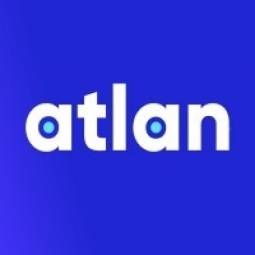Technology Category
- Analytics & Modeling - Data Mining
- Automation & Control - Human Machine Interface (HMI)
Applicable Industries
- Buildings
- Cement
Applicable Functions
- Procurement
- Product Research & Development
Use Cases
- Immersive Analytics
- Time Sensitive Networking
Services
- System Integration
- Training
About The Customer
Delhivery is India’s leading fulfillment platform for digital commerce. The company fulfills a million packages a day, 365 days a year, through its extensive network of automated sort centers, fulfillment centers, hubs, direct delivery centers, partner centers, vehicles, and team members. The company handles over 1.2 TB of data per day from its vast network of IoT devices. The data is organized and processed by hundreds of microservices, which means that ownership over the data is distributed across different teams. As the company grew, the scale and complexity of its data grew even faster. The onboarding process for new team members grew from 1-2 months to 3-4 months due to the growing complexity of the data.
The Challenge
Delhivery, India’s leading fulfillment platform for digital commerce, handles a massive amount of data, over 1.2 TB per day, from its vast network of IoT devices. The company fulfills a million packages a day, 365 days a year, through its extensive network of automated sort centers, fulfillment centers, hubs, direct delivery centers, partner centers, vehicles, and team members. With nearly 60,000 data events and messages per second, data discovery and organization became a significant challenge. The data is organized and processed by hundreds of microservices, which means that ownership over the data is distributed across different teams. As the company grew, the scale and complexity of its data grew even faster. Teams started building their own microservices, motivated by a desire to make data-driven decisions. However, finding and understanding the data became a significant issue. The onboarding process for new team members grew from 1-2 months to 3-4 months due to the growing complexity of the data. By 2019, Delhivery realized it desperately needed a data cataloguing solution.
The Solution
Delhivery started its journey with a data catalog in 2019. The company evaluated traditional enterprise-focused data catalogs like Alation, Collibra, and Waterline, built its own catalog with Atlas and Amundsen, and later adopted the modern SaaS unified data workspace, Atlan. The company started by evaluating commercial products based on features and total cost of ownership. However, none of the products met their requirements. The company then decided to build its own data catalog using Apache Atlas as the backbone of its metadata management framework. However, Atlas was too technical for non-technical team members, so they brought in Amundsen, a data discovery service, as the search interface for their Atlas backend. They also developed new features on top of Atlas and Amundsen to meet their specific needs. However, the user experience was not satisfactory, and the catalog did not integrate well into the daily work of the team members. After seven months of development, the company decided to look for a commercial solution again. They found Atlan, a modern data workspace that excelled at data cataloguing and discovery. Atlan had all the features they were looking for, and the user interface and experience were extremely intuitive. The company decided to go with Atlan, realizing that buying a data cataloguing product would be a lower total cost of ownership than continuing to build their own.
Operational Impact

Case Study missing?
Start adding your own!
Register with your work email and create a new case study profile for your business.
Related Case Studies.

Case Study
System 800xA at Indian Cement Plants
Chettinad Cement recognized that further efficiencies could be achieved in its cement manufacturing process. It looked to investing in comprehensive operational and control technologies to manage and derive productivity and energy efficiency gains from the assets on Line 2, their second plant in India.

Case Study
Energy Saving & Power Monitoring System
Recently a university in Taiwan was experiencing dramatic power usage increases due to its growing number of campus buildings and students. Aiming to analyze their power consumption and increase their power efficiency across 52 buildings, the university wanted to build a power management system utilizing web-based hardware and software. With these goals in mind, they contacted Advantech to help them develop their system and provide them with the means to save energy in the years to come.

Case Study
Intelligent Building Automation System and Energy Saving Solution
One of the most difficult problems facing the world is conserving energy in buildings. However, it is not easy to have a cost-effective solution to reduce energy usage in a building. One solution for saving energy is to implement an intelligent building automation system (BAS) which can be controlled according to its schedule. In Indonesia a large university with a five floor building and 22 classrooms wanted to save the amount of energy being used.

Case Study
Powering Smart Home Automation solutions with IoT for Energy conservation
Many industry leaders that offer Smart Energy Management products & solutions face challenges including:How to build a scalable platform that can automatically scale-up to on-board ‘n’ number of Smart home devicesData security, solution availability, and reliability are the other critical factors to deal withHow to create a robust common IoT platform that handles any kind of smart devicesHow to enable data management capabilities that would help in intelligent decision-making

Case Study
Protecting a Stadium from Hazardous Materials Using IoT2cell's Mobility Platform
There was a need for higher security at the AT&T Stadium during the NFL draft. There was a need to ensure that nuclear radiation material was not smuggled inside the stadium. Hazmat materials could often be missed in a standard checkpoint when gaining entry into a stadium.








